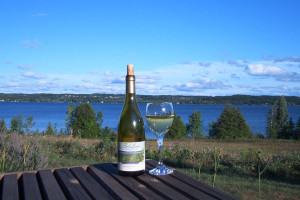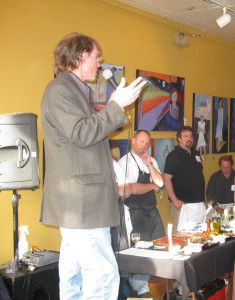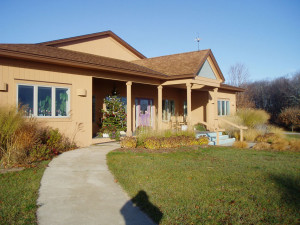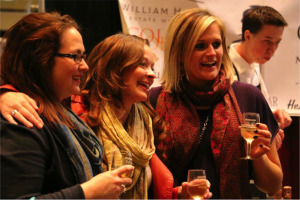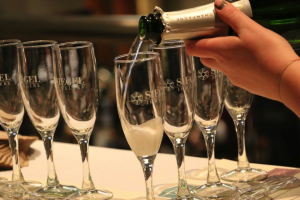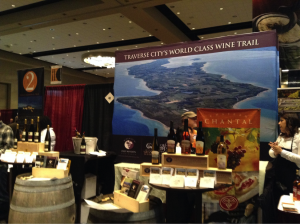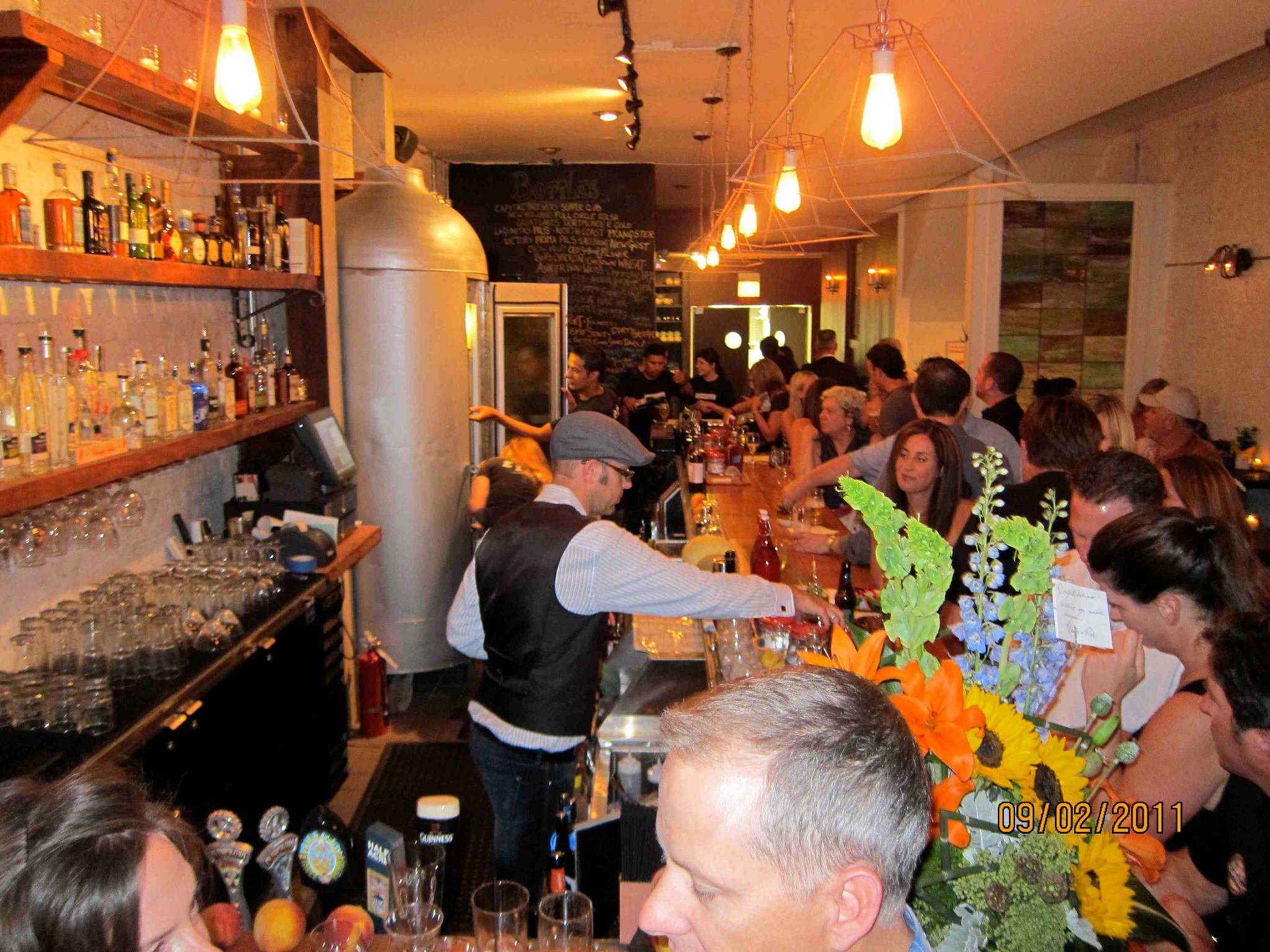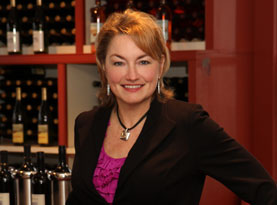Bel Lago Boasts 100 Grape Varieties
This article is sponsored by MI Wine Barrel, makers of durable and economic stainless steel wine barrels
Bel Lago Winery was founded in 1987 by chief winemaker Charles Edson together with his wife Amy Iezzoni, and Charlie’s in-laws, Domenic and Ruth Iezzoni on one acre in Michigan.
Now composed of approximately 37 acres, this northern Michigan winery is situated overlooking a ‘bel lago,” Italian for beautiful lake. The lake isn’t Lake Michigan as you may have guessed, but Lake Leelanau on the peninsula of the same name.
This particular place is special for a variety of reasons, not the least of whom is Mr. Edson or “Charlie,” as he is known affectionately across the Midwest. (Missourians remember Charlie from the years he spent at the Missouri State University Fruit Experiment Station.)
Charlie is a scientist and artist whose varietal passions are Pinot Noir and Auxerrois. A scientist by training, with both a bachelor and master’s degrees in horticulture, this Michigan native also earned his PhD in viticulture. All three degrees are from Michigan State University. So he knows winemaking from a technical perspective as well or better than many of his fellow winemakers.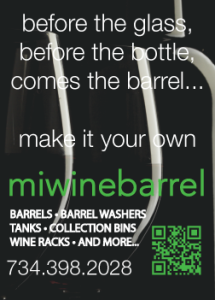
Mr. Edson is an artist at heart. As he puts it, ‘Wine needs to have texture and balance. It’s a blend of art and science but most of all it must be enjoyable.”
Ninety-five percent of is wines are crafted from estate-grown fruit. While Charlie is ably assisted by Blake Lougheed and Cristin Hosmer, both Michigan State University graduates (this is Spartan country!) he ‘makes the final call” on Bel Lago wines. He is however, anything but an autocrat, getting input and counsel from his fellow MSU alumni every step of the process.
While about 100 or so varietals are grown on the property, which is amazing in itself, his Auxerrois wine is 100% of this little-known Alsation varietal. After fermenting 80% in neutral oak, and the remaining 20% in stainless steel, it achieves the balance of texture Charlie seeks from all of his wines.
The only other Michigan winery to grow this Alsatian variety is Chateau Fontaine, where it’s blended into a white wine. Described in the tasting descriptions as ‘the baby sister of Chardonnay” it has a unique aroma and flavor profile. Apricot, melon, lime and citrus aromas are followed by a dry yet rich mouthfeel. According to Charlie, ‘a well behaved child, particularly when compared with my other favorite child, Pinot Noir”.
Ahh, Pinot Noir, aka ‘the heartbreak grape,” perhaps the most finicky varietal of all. The red grape of Burgundy is challenging, to say the very least. Thin-skinned, susceptible to rot, frequently very pale in color, this is the grape that ‘is amazing insofar such a light varietal can absorb so very much oak and still be so well-integrated,” says Mr. Edson. He utilizes the VSP (vertical shoot position) trellis system to maximize the limited Leelanau sunlight and ripen the grapes as fully as possible.
With 32 different clones of Pinot Noir planted on the estate, more clones than many wineries produce wines, it’s easy to discern his fascination, dare we say obsession, with this varietal. (A clone is an organism that comes from a single ancestor and is almost genetically identical.)
Bel Lago blends an amazing array of grapes to create their final Pinto Noir cuvees. A single bottle of Bel Lago Pinot Noir expresses grape genetics from all over the world. There’s the ‘usual” Dijon clones, of course. Add to that, the Martini clone- established by Louis Martin and Dr. Harold Olmo in the Los Carneros AVA in California. In addtion, Bel Lago also has the Wadenswil and Mariafeld clones from Switzerland and the Colmar clone, which is from Alsace, France.
Charlie Edson uses these clones for different purposes. ‘My best clones are Dijon clones. 115 is a kind of stand-alone, 113 and 777 have really bright fruit, 114 is a bit darker, and 667 is a good all-around clone.” Blending these clones is ‘lots of fun” states Charlie. Blending is key when making balanced, enjoyable wine.
The grapes are pressed very, very lightly. Using separate fermenters for clones 113, 114 and 115 is one method he uses to ‘get the most from the grapes.” Fermentation is started with full skin and stem contact. Temperature and time are dictated by the crop ripeness.
The prince of Pinot Noir has strong opinions regarding oak. ‘American oak is too powerful for these grapes and can dominate the flavor of the wine. I like French barrels from the Allier forest for their ability to enhance the fruitiness of the grapes. Vosges oak adds a wonderful perfume to the wine”.
Another ingredient in Edson’s wine recipe is the toast level of the different barrels. Light, medium or heavy/dark toasts are all used. Having tasted wines from two different barrels with the only difference being the lack of toast of the barrel head, there is a significant difference! Reserve Pinot Noirs were made recently only in the 2001, 2002, 2010 and 2012 vintages.
The goal at Bel Lago is to produce ‘well-crafted, balanced and textured wines with elegant and integrated tannins. A bit of toast enhances the experience,” states Charlie. Producing over 15 different wines, Bel Lago offers a wide range of wines but the passion is for Pinot Noir!
As an aside, during November, I had the pleasure of attending the Grand Rapids International Wine, Beer and Food Festival. Here’s a few photos from what has become one of Michigan’s great food wine and beer celebrations in only its sixth year.

